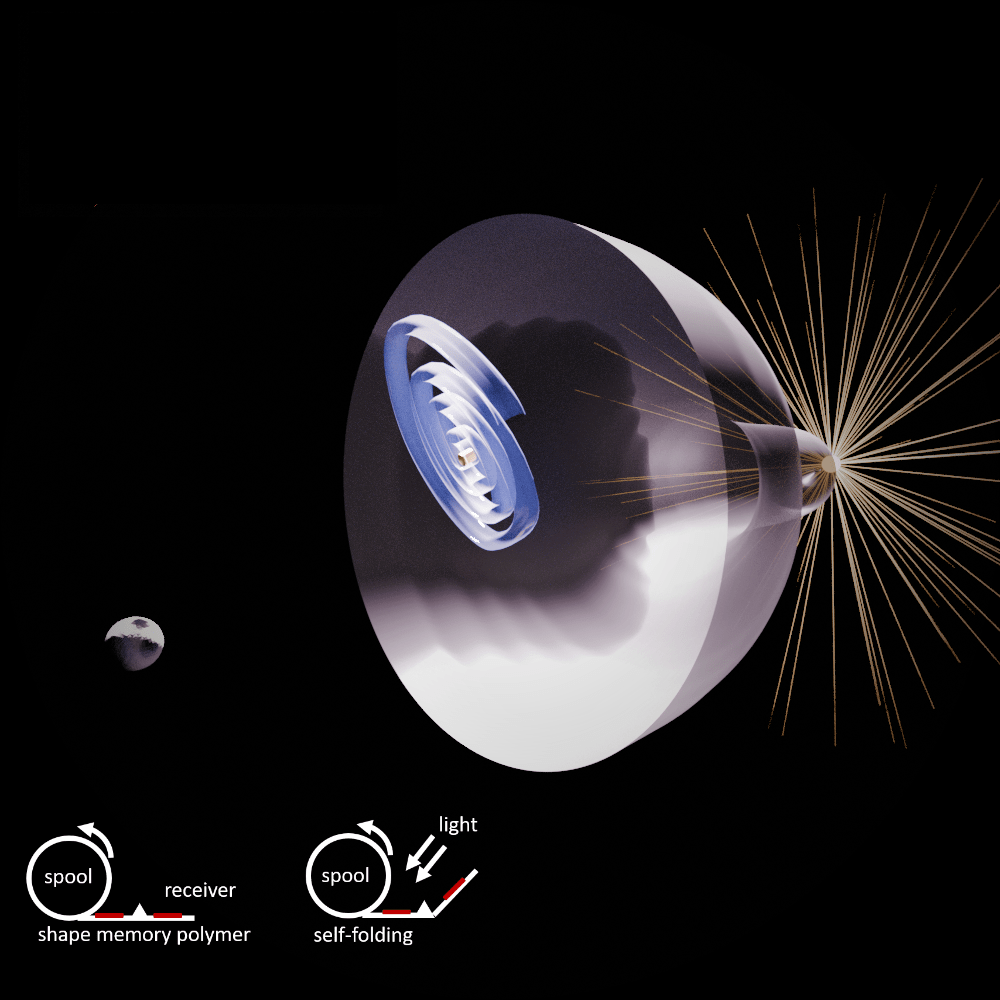Davide Guzzetti
Auburn University
Today, our universe remains largely uncharted within a narrow band of frequencies nearby and below 30 MHz. In this range, Earth’s ionosphere and anthropogenic radio emissions almost completely impede radio astronomy from the ground. In addition, kilometer-sized antenna arrays are required to observe such a frequency range with high resolution. Because of the required size, space-based antenna arrays, which are a solution to ionospheric distortion, are hard to realize. We aim to study the feasibility of integrating an array of receivers on a shape memory polymer (SMP) bus that is capable of self-folding when exposed to solar radiation. SMPs are smart materials that can change shape in response to external stimuli, including heat and, indirectly, infrared light absorption. SMP sheets can be patterned with light-absorbing ink hinges that enable control of the shape change. We envision the utilization of this technology for the flat fabrication of kilometer-sized antenna arrays that are packaged on a spool for launch and self-transform into the operative configuration once in orbit. Large, space-borne interferometers may enable prominent advances in science, including the study of cosmic dark ages signals, space weather, solar activity, gaseous planets, and galaxies. In addition to the proposed baseline mission – if demonstrated to be feasible – self-folding SMP buses with embedded electronic components promise to enable new mission concepts that are of interests to SmallSat enthusiasts, astronomers, and on-orbit servicing, assembly and manufacturing (OSAM). This project is pursued in collaboration with Dr. Russell Mailen’s Polymer Mechanics Research Lab at Auburn University.

































